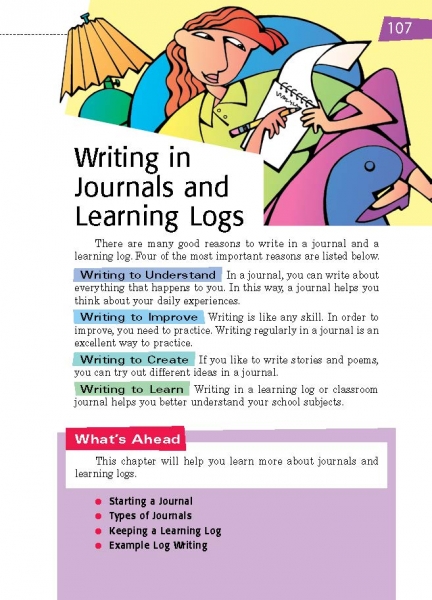Page 107 from

Start-Up Activity
Journal writing gives students a chance to practice a key writing skill: fluency. Read and discuss the chapter-opening page. Emphasize the fact that in order to improve as writers, students must first feel comfortable with the physical act of composing. Journal writing helps them develop this comfort.
But also know that for some English Language Learners, journal writing can create something that educator Carol Archer calls “culture bumps.” They may have trouble seeing the value of such loosely structured writing. For these students, it will be best to supply them specific writing prompts, at least at the start.
As an activity, provide students with the bulleted prompt (or one of your choosing) and ask them to write freely about it. Make sure they know the activity won't be graded.
- Something that is giving me trouble in school is . . .
Think About It
“Regular notebook writing acts as a wakeup call, a daily reminder to keep all your senses alert.”
—Ralph Fletcher

Start-Up Activity
Journal writing gives students a chance to practice a key writing skill: fluency. Read and discuss the chapter-opening page. Emphasize the fact that in order to improve as writers, students must first feel comfortable with the physical act of composing. Journal writing helps them develop this comfort.
But also know that for some English Language Learners, journal writing can create something that educator Carol Archer calls “culture bumps.” They may have trouble seeing the value of such loosely structured writing. For these students, it will be best to supply them specific writing prompts, at least at the start.
As an activity, provide students with the bulleted prompt (or one of your choosing) and ask them to write freely about it. Make sure they know the activity won't be graded.
- Something that is giving me trouble in school is . . .
Think About It
“Regular notebook writing acts as a wakeup call, a daily reminder to keep all your senses alert.”
—Ralph Fletcher


